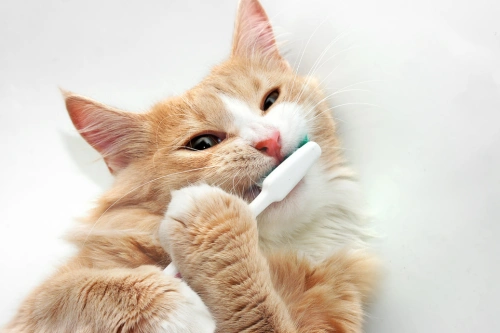Key Takeaways
At least 80% of dogs and 70% of cats develop gum disease by age 2 or 3
Periodontal disease (gum disease) is the most common health issue found cats and dogs
Only 4% of dog owners regularly brush their dog’s teeth
Prevention of disease is better than treatment of disease
Smaller dogs are more prone to gum disease including earlier onset and more aggressive progression
Larger cats are more prone to gum disease
Brushing you pet’s teeth daily is the most effective form of prevention
Starting pet dental care earlier in life results in better outcomes by increasing chances of pet compliance as well as delaying or preventing disease development
There are less effective, but important alternatives to tooth brushing
For best results, combining tooth brushing with proper dental chews is recommended
Dental treats should not make up more than 10% of a pet’s diet
Veterinary Oral Health Council (VOHC) approved products are the most reliable products on the market due to their clinical studies showing safety and effectiveness
Brushing may be the gold standard, but this does not replace regular veterinary check-ups
Why Pet Dental Health Matters
Did you know that 80-89% of dogs develop periodontal disease (i.e., gum disease) by age two or three? That probability is 70% for cats. This makes it one of the most common yet overlooked health issues in pets. In fact, periodontal disease is the most common disease found in cats and dogs. Unsurprisingly, only 7% of dogs are considered “orally healthy”. Unfortunately, owner compliance with good home dental care is lacking. About 4% of pet owners properly and routinely brush their pet’s teeth.
Veterinarians are aware that home dental care by owners is inadequate. The fault does not solely lie with pet owners. In part, veterinarians need to improve their communication as a whole regarding the importance of proper dental care and overall pet dental health. Many in the veterinary world including some leading veterinary organizations take this knowledge gap seriously. They are proactively working to improve communication between vet and owner in a clear, concise, and effective way. This article aims to help you as a pet owner with filling that knowledge cap.
Understanding Periodontal Disease
Periodontal disease, or gum disease, is the result of an infection and inflammation of the gums, bones, and all other tissues that support teeth. This can lead to chronic loss of tooth support that may lead to tooth loss or other issues.
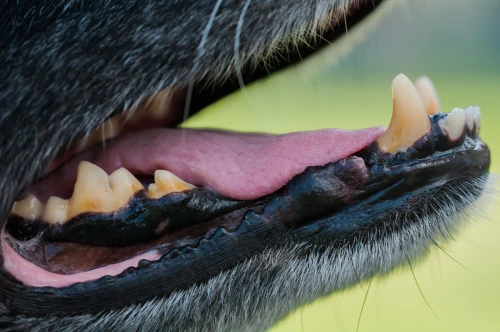
Research suggests periodontal disease is possibly linked to heart, kidney, and liver problems, though no causal relationship has yet been determined. Cats that have gum disease are 1.79 times more likely to be diagnosed with another disorder. Bacteria from infected gums can enter the bloodstream, potentially leading to more severe health complications. On top of that, periodontal disease left untreated can lead to pain and infections ultimately reducing a pet’s quality of life. This is why preventative care is crucial. In fact, scientific researchers and veterinarians agree that the prevention of gum disease is more important than treatment for the disease. One research paper from 2020 out of Sweden concludes, “For the dog’s well-being, prevention of disease is superior to treatment of already established disease.”
The Dangers of Periodontal Disease
Periodontal disease starts with plaque buildup on the teeth. If left untreated, it hardens into tartar, leading to gum inflammation, infection, and tooth loss. Smaller dog breeds, like the Yorkshire Terrier as well as brachycephalic breeds, are particularly vulnerable due to tooth overcrowding, rotation, and thinner gum tissue. This creates more crevices for plaque to form. This means smaller dogs may develop gum disease at an earlier age than larger dog breeds.
With that said, dogs of all sizes and ages are susceptible. Cats aren’t off the hook either, especially Siamese and Main Coons. Though in cats, an increase in weight is associated with increased risk of periodontal disease.
Symptoms of periodontal disease include:
- Bad breath (halitosis or malodor)
- Red, swollen gums
- Difficulty eating or abnormal eating behavior
- Loose or missing teeth
- Weight loss
- Abnormal aggression or distress
- Head shaking
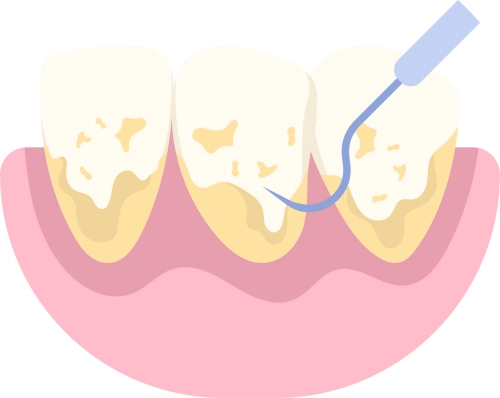
Unfortunately, once tartar builds up, brushing alone won’t remove it and professional veterinary cleanings are necessary. However, the good news is that daily home care can prevent or delay disease onset. It is important to note that even with a professional cleaning, home care does not stop. In fact, within minutes to hours after a professional cleaning, the first stages of plaque formation begins again. Therefore, the benefit of a professional cleaning is lost within a matter of days without home care making prevention and the continuation of home care all the more important.
The Best Defense: Daily Tooth Brushing
Tooth Brushing
“Brushing a dog’s teeth is the most effective form of preventative oral health care.” -Purdue University College of Veterinary Medicine
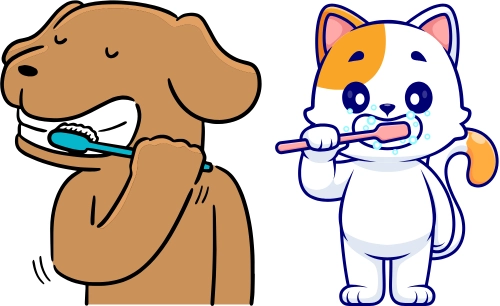
Daily tooth brushing is the gold standard for preventing dental disease and preserving overall pet dental health. A recommendation for daily brushing came out in research in 1996 that found even every other day brushing was insufficient. Daily brushing must be done to have a benefit. That recommendation still holds to this day. In addition to daily brushing, the current recommendation is to start pets on oral care early. Kittens and puppies receiving proper oral care are able to delay the onset of gum disease. They are also easier to train and more likely to remain compliant.
Studies show that within one week of daily brushing, pets experience improved oral health. However, stopping brushing for just two weeks allows plaque to return, making consistency key.
How to Start Brushing Your Pet’s Teeth
- Use pet-safe toothpaste – Human toothpaste can be toxic to pets.
- Introduce brushing gradually – Let your pet sniff and lick the toothbrush.
- Be patient and reward them – Positive reinforcement helps with compliance. Move at your pet’s pace. Do not force them as the likelihood of compliance diminishes with force.
Still struggling? Studies show positive reinforcement techniques can help pets become more comfortable with brushing over time. Try finding resources on Fear Free Homes or reaching out to a Fear Free Certified Professional for guidance. A 2024 study found that dog’s receiving positive reinforcement had decreased levels of stress (very low in fact) after 2 weeks of proper training and conditioning. It can be done!
Alternatives to Tooth Brushing
If brushing is not feasible or your pet refuses to tolerate it, there are other ways to help maintain pet dental health. While these methods are not as effective as brushing, they can still reduce plaque and support overall dental hygiene.
- Dental diets – Larger abrasive kibble designed to increase chewing activity that mechanically scrapes off plaque and/or tartar (consider talking with your veterinarian about food options noting the VOHC-approved diet products). Always discuss diet with your veterinarian.
- Antiseptics – Chlorhexidine in the form of gels or wipes has been found to reduce plaque accumulation and gingivitis.
- Dental chews – Help scrape plaque away while providing enrichment. Dental treats with vitamin C and zinc sulfide may reduce oral bacteria more than other products. A study of Greenies found daily dental chews reduced gingivitis severity by 80%, bad breath by 45%, plaque removal by 32%, and calculus (tartar) by 60%.
- Water additives – Designed to reduce bacteria in the mouth and freshen breath.
- Green Tea Extract – Though limited in its research, an older study from 1995 found that green tea added to dog food reduced bacteria in the plaque of dogs with gingivitis by 60%. Further research is necessary to explore the potential benefits of this alternative.
While these options can help, they are valuable alternatives to consider if brushing is not feasible. Additionally, using these products alongside regular tooth brushing can further enhance your pet’s oral health. For example, tooth brushing often only reaches the outer surface of the teeth, leaving the grooves and palatal surface (backside of the teeth) with insufficient care. The addition of a proper dental chew may assist with this additional plaque removal.
Make sure that dental treats do not consist of more than 10% of the daily diet or your pet faces the possibility of consuming an unbalanced diet.
Not All Dental Products Are Equal: The VOHC Seal Matters
If brushing isn’t an option or desired, there are alternative dental care solutions as discussed, but not all are safe or effective. As responsible pet owners, determining the credibility of manufacturer’s claims by assessing all available research and evidence falls on our shoulders. Products such as bones and hard plastics can cause damage including tooth fractures. The American Animal Hospital Association Guidelines Task Force states, “There is not a strong rationale for offering hard treats (antlers, synthetic, or natural bones) that could damage the structural integrity of the tooth, ultimately leading to unnecessary pain and infection.” A general rule of thumb to consider is: objects that are too hard to pit with a finger nail or do not flex easily by hand should be avoided.
The Veterinary Oral Health Council (VOHC), a part of the American Veterinary Dental College, approves products that meet strict scientific standards including data from at least two clinical studies demonstrating a product’s safety and efficacy at removing plaque and/or calculus (tartar). The methods used by the VOHC are supported by the AAHA.
Look for the VOHC Seal of Acceptance when choosing:
- Dental chews (reducing plaque and tartar buildup)
- Pet specific toothpaste
- Specialized dental diets
- Water additives and oral rinses
Why Most Owners Don’t Brush (And How to Change That)
Despite overwhelming evidence that brushing prevents disease, compliance remains low:
- Only 4% of pet owners brush daily
- Only 3 in 10 owners believe tooth brushing is very important for good dental health
- Nearly half never brush at all
- 1 in 5 stop brushing due to their pet’s resistance
The issue of compliance goes beyond just tooth brushing. There is a discrepancy between belief and action when it comes to alternatives such as dental chews. While 2 in 3 owners believe dental chews are very important for good dental health, only 14% actually provide them.
Veterinary surveys show that owners who are educated on the importance of pet dental health are more likely to start brushing their pet’s teeth and remain consistent with home dental care. Now that you know the risks and benefits, start today! Your pet’s health depends on it.
Take Action: Protect Your Pet’s Health Today
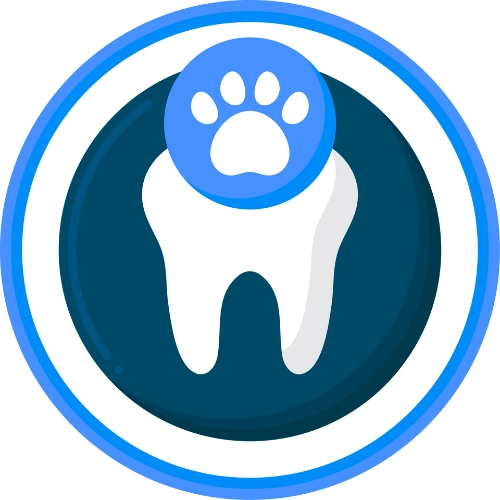
The science is clear: Daily dental care is essential for your pet’s health and longevity.
- Brushing is the gold standard – Start slow and be consistent.
- Use VOHC-approved products – Supplements like chews and diets help.
- Schedule regular dental check-ups – Professional exams catch problems early.
If you’ve read our article on the Five Freedoms and the Five Opportunities to Thrive, you’ll know that our role as responsible pet owners includes ensuring:
- Freedom from pain, injury, and disease
- Opportunity for optimal health
Your pet relies on you for their wellbeing, and pet dental health is no exception. Don’t wait until dental disease causes pain or costly vet bills. Start today. A few moments of daily care can lead to a lifetime of better health, comfort, and happiness for your beloved pet. Make the commitment, take action, and give your pet the best chance at a healthy, thriving life.
